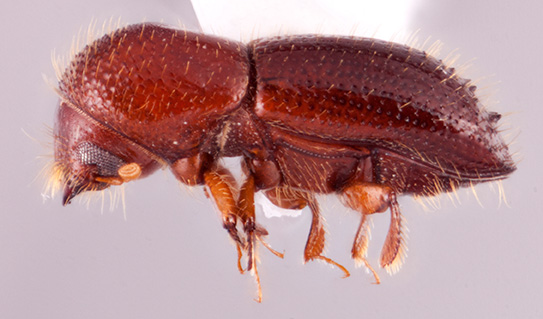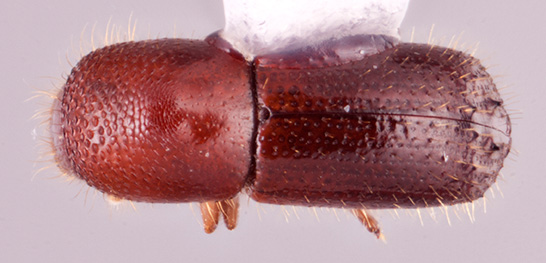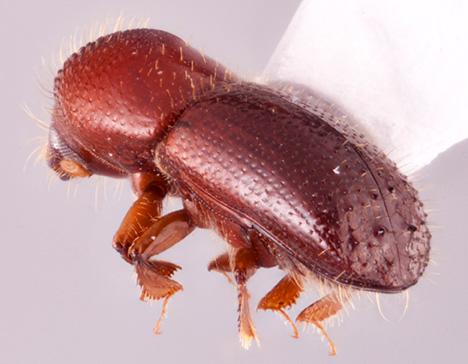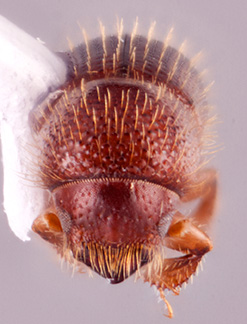Euwallacea similis
|
Euwallacea similis lateral; R.K. Osborn |
|
Euwallacea similis dorsal; R.K. Osborn |
|
Euwallacea similis declivity; R.K. Osborn |
|
Euwallacea similis frontal; R.K. Osborn |
Taxonomic history
Xyleborus similis Ferrari, 1867: 23.
Wallacellus similis (Ferrari): Hulcr and Cognato, 2010a: 29.
Euwallacea similis (Ferrari) Storer et al., 2015: 396.
Synonyms
Bostrichus ferrugineus Bohemann, 1859: 88. Preoccupied by Fabricius (1801). Schedl, 1960a: 11.
Xyleborus parvulus Eichhoff, 1868b: 152. Schedl 1959: 505.
Xyleborus dilatatus Eichhoff, 1878b: 393. Schedl 1959: 505.
Xyleborus submarginatus Blandford, 1896b: 223. Eggers 1929: 48.
Xyleborus bucco Schaufuss, 1897: 212. Schedl 1959: 505.
Xyleborus capito Schaufuss, 1897: 215. Schedl 1959: 505.
Xyleborus novaguineanuus Schedl, 1936b: 530. Wood 1989: 177.
Xyleborus dilatatulus Schedl, 1953a: 127. Wood 1989: 177.
Diagnosis
2.3−2.5 mm long (mean = 2.42 mm; n = 5); 2.88−3.13 times as long as wide. This species is distinguished by declivitaldeclivital:
pertaining to the elytral declivity
interstriae 1 laterally broadened, bearing a large median tubercletubercle:
a small knob-like or rounded protuberance of the exoskeleton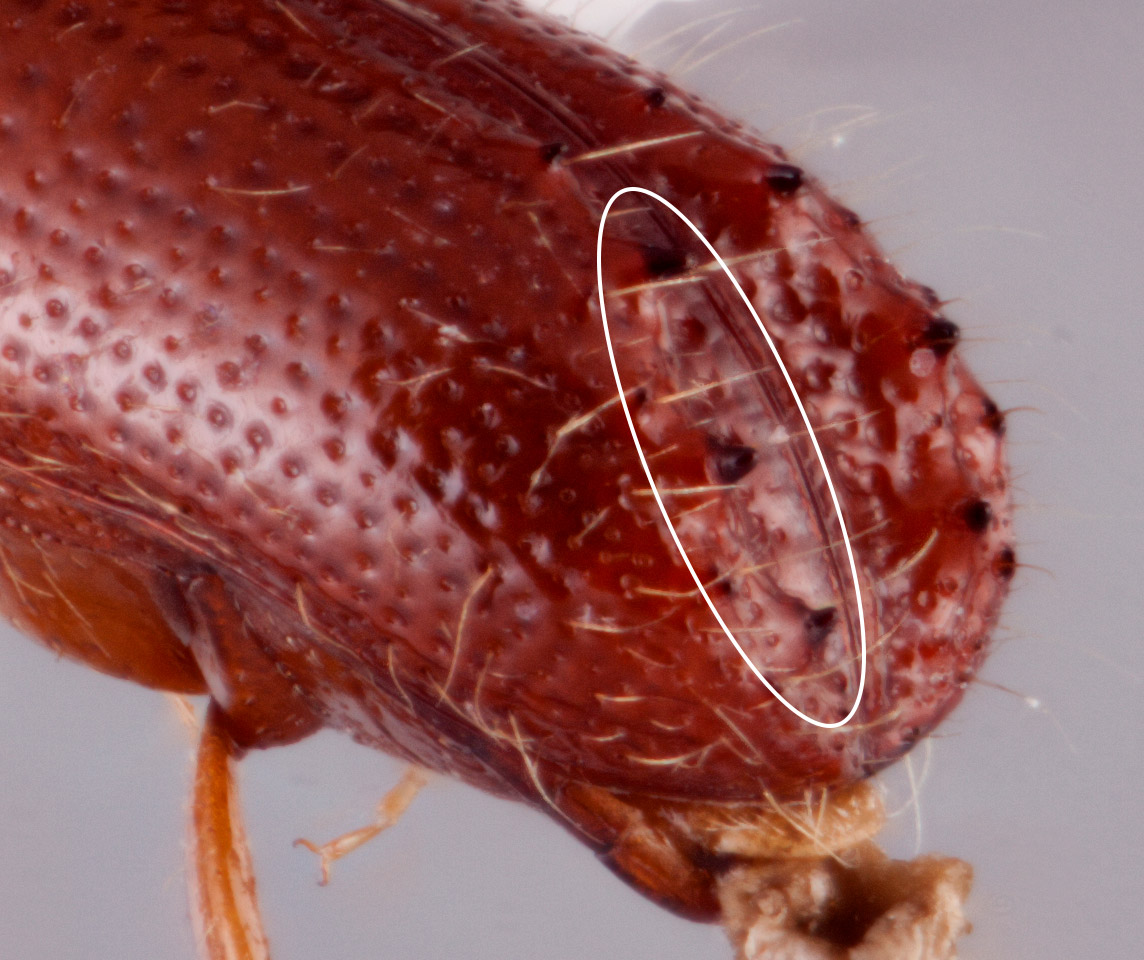 and several small granulesgranule:
and several small granulesgranule:
a small rounded protuberance, like grains of sand
 (rarely median tuberclestubercle:
(rarely median tuberclestubercle:
a small knob-like or rounded protuberance of the exoskeleton absent); small body size and elongate form; and red brown color.
absent); small body size and elongate form; and red brown color.
May be confused with
Euwallacea piceus, Planiculus spp., Xyleborus affinis, X. cognatus, X. ferrugineus, X. perforans, and X. volvulus
Distribution
throughout the Oriental region from the Indian subcontinent through Southeast Asia and Indonesia to New Guinea, Australia, and the Pacific islands; tropical Africa, Indian Ocean islands; recorded in the study area from Bangladesh, Cambodia, China (Chongqing, Guangdong, Hainan, Hong Kong, Yunnan), India (Andaman Is, Assam, Jharkhand, Karnataka, Madhya Pradesh, Nicobar Is, Sikkim, Tamil Nadu, Uttarakhand, Uttar Pradesh, West Bengal), Laos, Myanmar, Nepal, Taiwan, Thailand, Vietnam; introduced to the US (Rabaglia et al. 2006Rabaglia et al. 2006:
Rabaglia RJ, Dole SA, Cognato AI. 2006. Review of America Xyleborina (Coleoptera: Curculionidae: Scolytinae) occurring north of Mexico, with an illustrated key. Annals of the Entomological Society of America 99: 1034-1056. https://doi.org/10.1603/0013- 8746(2006)99[1034:ROAXCC]2.0.CO;2, Gomez et al. 2018aGomez et al. 2018a:
Gomez DF, Rabaglia RJ, Fairbanks KEO, Hulcr J. 2018a. North American Xyleborini north of Mexico: a review and key to genera and species (Coleoptera, Curculionidae, Scolytinae). ZooKeys 768: 19-68. https://doi.org/10.3897/zookeys.768.24697) and Central and South America (Wood 2007Wood 2007:
Wood SL. 2007. Bark and ambrosia beetles of South America (Coleoptera: Scolytidae). Brigham Young University, M.L. Bean Life Science Museum; Provo, 900 p.)
Host plants
strongly polyphagous (Browne 1961bBrowne 1961b:
Browne FG. 1961b. The biology of Malayan Scolytidae and Platypodidae. Malayan Forest Records 22: 1-255., Schedl 1963aSchedl 1963a:
Schedl KE. 1963a. Scolytidae und Platypodidae Afrikas. Band II. Familie Scolytidae (Fortsetzung), Unterfamilie Ipinae (Fortsetzung). Revista de Entomologia de Moccedil;ambique 5: 1-594.)
Remarks
The biology of the species is discussed by Browne (1961a, 1968), Kalshoven (1964) and Schedl (1963a).
DNA data
Sequences available for COI and CAD.
COI: MN619946; MN619947; MN619948; MN619949; MN619950; MN619951; MN619952; HM064139
CAD: HM064317; MN620218; MN620219; MN620220; MN620221; MN620222; MN620223; MN620224; MN620225

